Our terroir
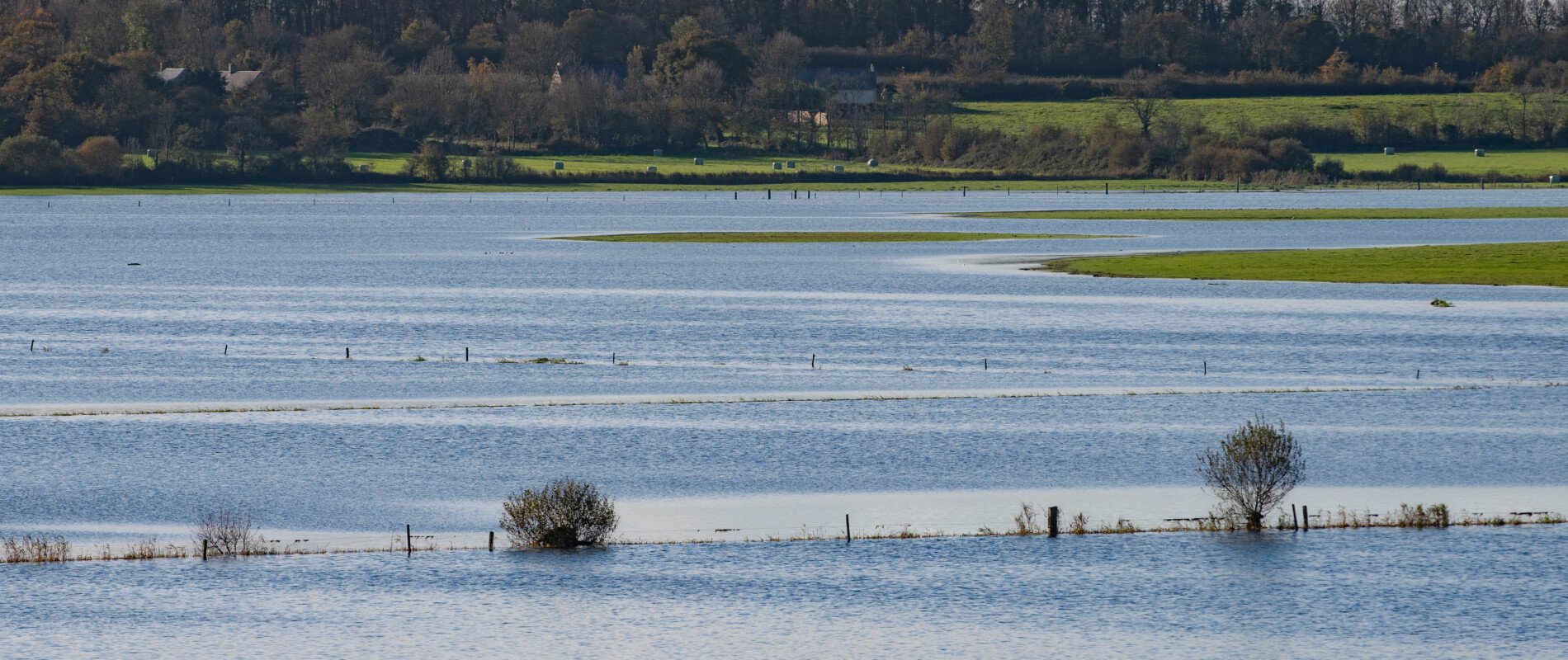
Welcome to the heart of the Isigny terroir
We often talk about our unspoilt terroir which guarantees the quality of our products, but what is so special about this terroir?
Let’s explore this dairy “Garden of Eden”, which for centuries has offered characteristics of which we can be proud. Although the Isigny-sur-Mer name and reputation are renowned worldwide, who could accurately locate this Normandy village on a map?
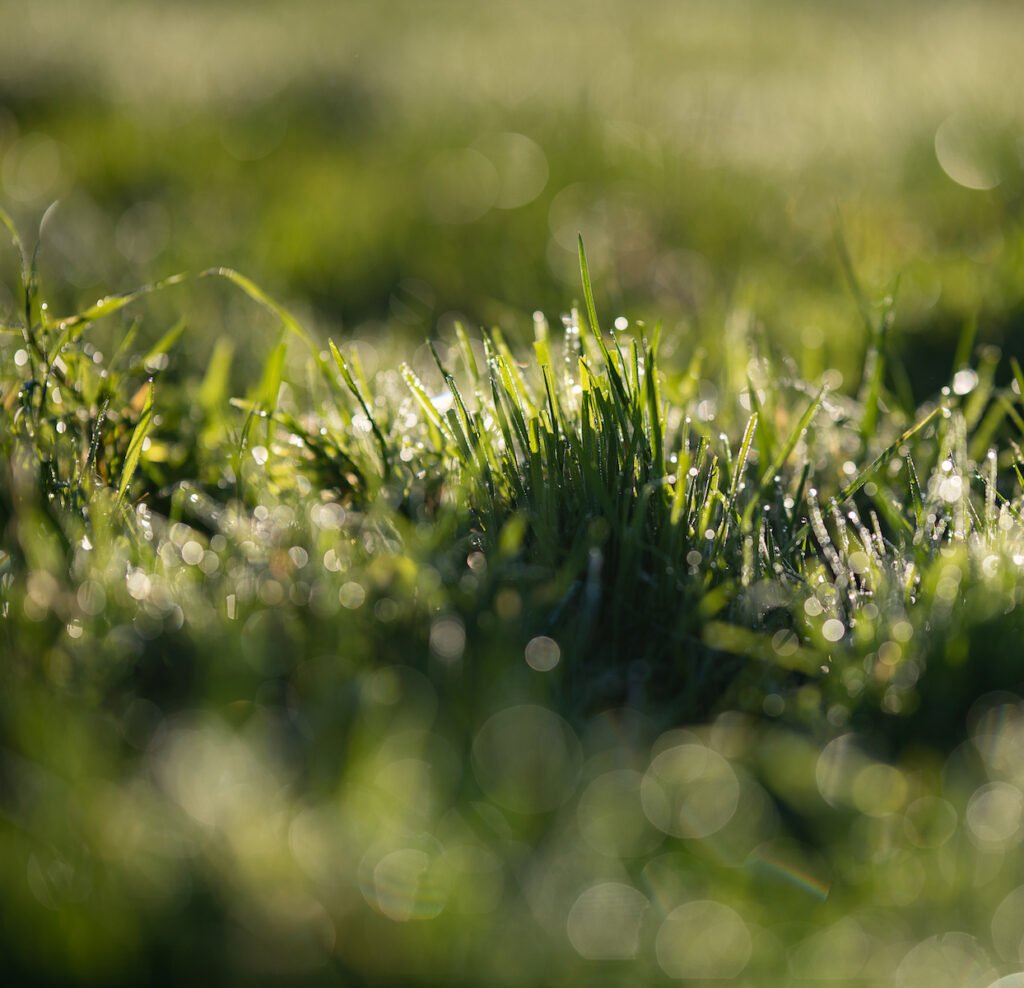
An oceanic climate that encourages growth for exceptional grass
During summer, the temperature in this humid terroir remains mild, and the winters are not particularly harsh.
Our pastures benefit from the sea spray and the temperate oceanic climate, which ensure exceptional grass growth.
This means our cows graze on lush grass which produces very high-quality milk, enriched with mineral salts, micronutrients and oleic fatty acids.
A very restricted collection area
The collection area covers a geographical zone of 50 km in the Cotentin and Bessin regions around Isigny-sur-Mer. It has been transformed and shaped by mankind and today promotes the emergence of a prestigious and abundant pastureland terroir, a true “fountain of Butter and Cream”.
This terroir is home to our 380 farms, the majority of which are located in the Manche and in the Cotentin marshes in particular.
A multitude of rivers run through the marshes, forming a dense network of waterways irrigating the land and making it rich and fertile due to the alluvial deposits.
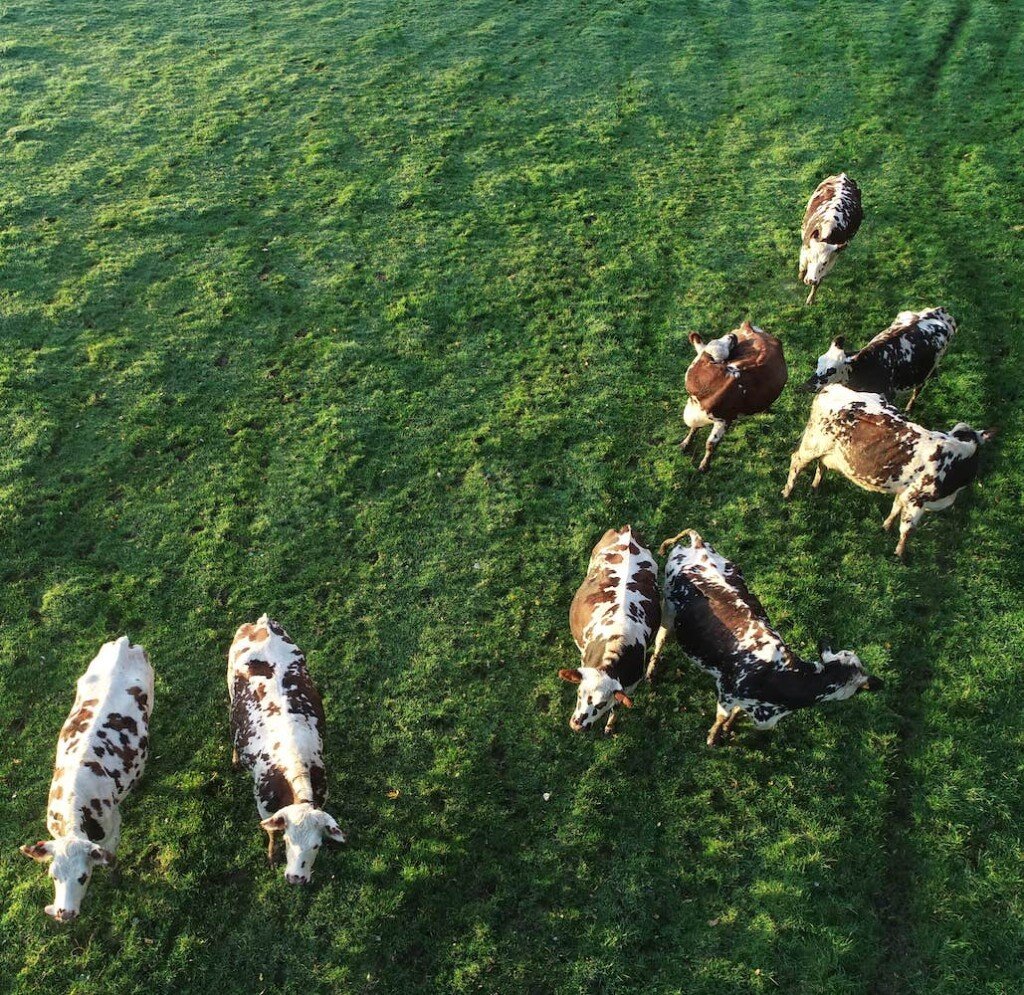
The small town of Isigny-sur-Mer lies between fresh and salt water expanses, right where two very different landscapes meet: the lowlands, which are home to the Cotentin and Bessin marshes, and the uplands, where the wooded bocage landscape is found.
The lowlands: Cotentin and Bessin marshes
This is a vast wetland covering 25,000 hectares, internationally recognised for its rich biodiversity. The Cotentin and Bessin marshes are shaped by the valleys of five rivers; four of which, the Douve, Taute, Vire and Aure, flow into the Baie des Veys.
These marshes benefit from exceptional geological and topographical conditions to which unique vegetation has adapted.
The long wet meadows, which are particularly favoured by Normande cows, can be walked through but in winter they are covered with fresh water.
The landscape of the lowlands is particularly varied. It ranges from isolated expanses of grassy turf where cows quietly graze, to peaty areas covered with a silty clay layer, and soft springy soil, with a characteristic black peat colour, and hedgerows of trees and shrubs under which the herds can take shelter in hot weather. The soils sometimes contain tangue, marine and river sediments composed of small shells, organic matter and clay.
All these characteristics enable us to produce exceptional milk and to manufacture products of unrivalled quality.
The aim of our project is to support the hedge network in the bocage landscape. It is very valuable in terms of heritage, for biodiversity and carbon storage. The Cooperative supports farmers’ projects, to preserve hedges and plant new ones.
Arnaud Fossey, President of the Isigny Sainte-Mère Cooperative
The Marshes over the 4 seasons
Agricultural activities and practices in the marshes are determined by the seasonal patterns. Here, the people respect nature’s cycles…
From winter to spring, the landscape is buffeted by westerly winds, sea spray, and persistent light rain that shape the landscape and give it a marine influence. In spring and summer, the sun awakens the fauna and flora and warms the marshes…
- In winter, when rainfall is high, the rivers overflow and the water tables rise.
- In the spring, vegetation emerges from the flooded land and the cows graze on these micronutrient-rich meadows.
- In the summer, the hay is mown and with the end of the season comes the maintenance of channels and ditches.
- In the autumn, the cows enjoy the last days of grazing before the ground is no longer passable.
They provide unique grazing land and a suitable geographical and meteorological situation: a temperate oceanic climate which provides ideal conditions for grazing.
The uplands: the bocage
In the uplands, where the wooded Bessin bocage is found, the landscapes offer natural areas with rich pasture for the dairy cows to enjoy fresh grass in both summer and winter.
The square plots of land are often surrounded by a dense network of bocage hedges providing shelter for dairy herds in hot weather. The appearance and colours of the hedges depend on the species they contain, and ash and oak are more or less abundant depending on the type of soil.
They serve a number of functions, including windbreaks, a habitat for an abundance of flora and fauna, soil and water retention, and property demarcation. The Cooperative is also committed to a hedgerow replanting programme.
We are on the edge of a nature reserve which is at the gateway to the Cotentin and Bessin Marshes park. We are here to look after the marshes, we mow late to preserve the flora and fauna within the terroir. We are involved in environmental protection. In our industry, we always try to look at things in a new light and we always ask ourselves whether our practices are sustainable and responsible.
Julien Legoupil, Cooperative-member producer
The hedge planting programme
The wooded bocage hedgerows that stretch across the landscape of the Cotentin and Bessin regions are an essential part of the Isigny terroir’s ecosystem, just like the pasture and the Normande breed of cow.
In 2021, in partnership with the Cotentin and Bessin Marshes Regional Natural Park, the Isigny Sainte-Mère Dairy Cooperative launched an action plan to preserve and replant hedgerows.
Each cooperative-member producer replanting hedgerows can claim a financial grant from the Cooperative. This subsidy is accompanied by support from H&H (our partner for marketing infant milk powders) and a local authority grant (Normandy Region).
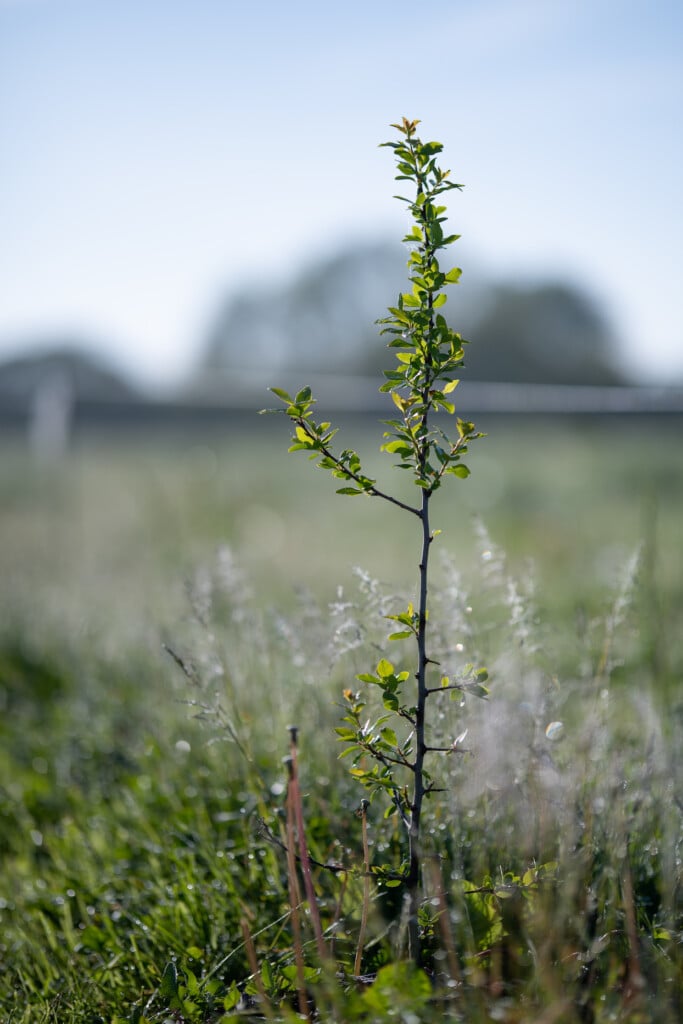
We live in a wooded bocage region, where we have a lot of hedges, a lot of trees and relatively small plots of land. I have taken on the task of maintaining small plots and meadows, and my farm is all grass. Our aim is to make quality products, but I think it’s also important to protect our environment. I would like to further divide up my plots, remake embankments and ditches, and replant more hedges.
Laurent Allix, Cooperative-member producer
Denis Letan, Director of the Cotentin and Bessin Marshes Regional Natural Park
The Baie des Veys is an estuary into which flow four of the main rivers (the Aure, Vire, Taute, and Douve) that irrigate the Cotentin marshlands.
This wetland, which is difficult to cross, has been developed since the 18th century with canals and floodgates to collect the irregular river flow. These floodgates, which were installed in Isigny in 1731, close at high tide to prevent the sea from rising inland, and open at low tide to allow the fresh water to drain away, thereby transforming the bay into agricultural land and pasture.
In 1805, Napoleon I’s major public works got a massive drainage project under way. Rivers were channelled, and canals were marked out… In 1853, thousands of hectares were drained to become lush grasslands and to accommodate large numbers of herds.
Exceptional flora and fauna
Within this exceptional terroir, you may catch sight of a stork or a harrier coming to breed. Dragonflies and other insects also enjoy the rich and diverse flora found, for instance, near the waterways that run through the marsh (water-crowfoot, reeds, etc.).
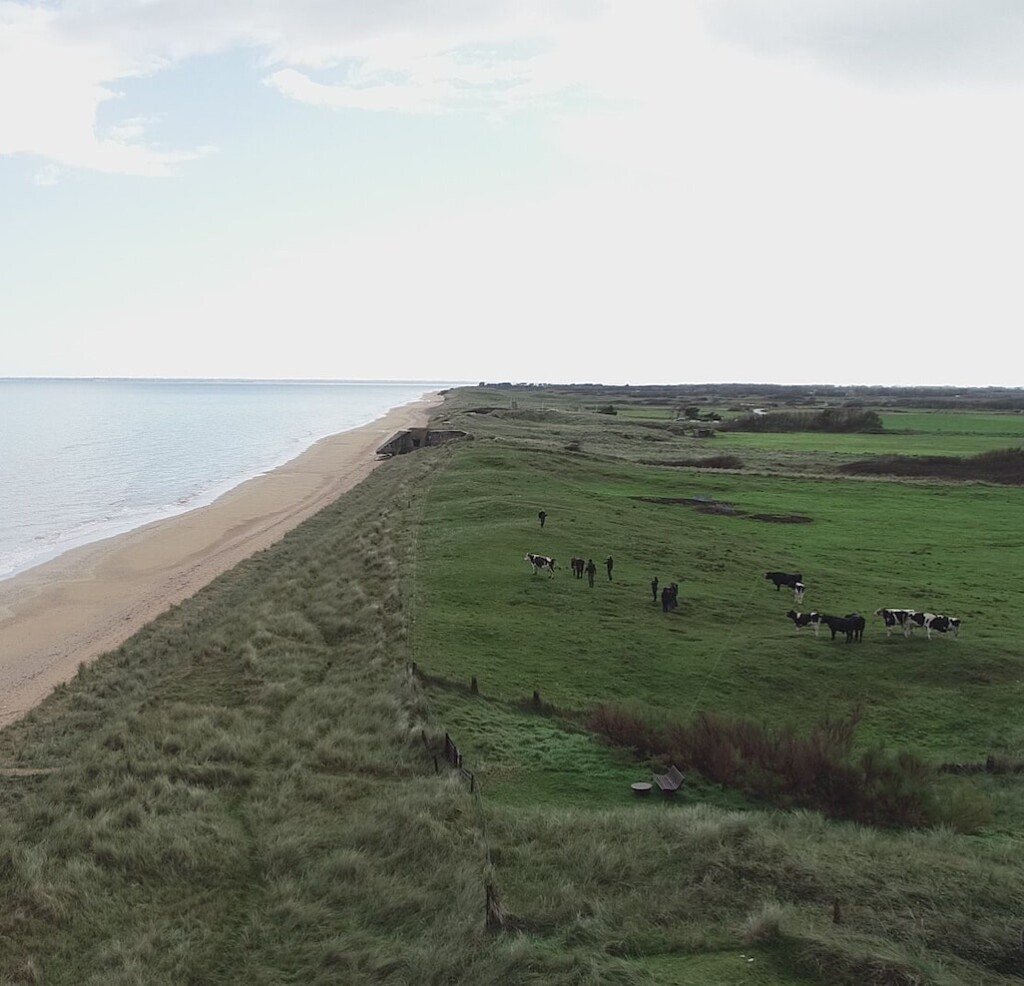
The marsh is exceptionally rich in animal and plant species that find a safe marshy haven in this area.
The park is located on the bird migration route between Northern Europe and the African continent.
Underwater, in spring, trout and salmon come to reproduce before heading out to sea. When the season arrives, the Baie des Veys becomes a huge nursery.
In the heart of the bay, harbour seals receive considerable attention, with the site being one of the rare breeding grounds for this mammal. The Baie des Veys is also home to gulls, woodcocks, cormorants and red-breasted mergansers, to name a few.
Since its creation in 1991, the Regional Natural Park has been actively involved in restoring the ancient elm bocage, which is an iconic feature of its heritage. With the support of numerous farmers, more than 500,000 trees have been replanted. This ambitious partnership with the Isigny Sainte-Mère Cooperative strengthens the incentives for planting and should persuade each member to commit to improving their part of the bocage hedgerow network.
Denis Letan, Director of the Cotentin and Bessin Marshes Regional Natural Park
The terroir’s influence on Isigny Sainte-Mère products
The Isigny terroir influences the quality, taste, colour and characteristics of our products. In order to produce milk that meets the specifications of Isigny PDO Butter and Cream, our farmers and producers comply with a farming method that prioritises grazing and food self-sufficiency, with external feed being restricted.
It gives Isigny PDO Butter its buttercup colour and its hint of hazelnut. Its sensory properties are the result of the cows’ diet, regular rainfall, mild temperatures and the abundance of grass rich in salts and minerals.
Isigny PDO Cream is also produced exclusively using milk from the Cotentin and Bessin regions. Its ivory colour is derived from an authentic slow and organic maturing process following traditional methods (16 to 18 hours). It has a smooth, rich and full-bodied texture, with a delicate touch of sourness that gives it a distinctive flavour. It is also well-known for its firm texture and ivory colour.
Isigny Camembert, which is made from unpasteurised milk collected between the sea and the wooded bocage, has a powerful aroma, a rich creamy texture and a melt-in-the-mouth centre.
The Cotentin and Bessin Marshes Regional Natural Park
The Regional Natural Park was created in 1991 in the Cotentin and Bessin marshes, covering 25,000 hectares of wetlands.
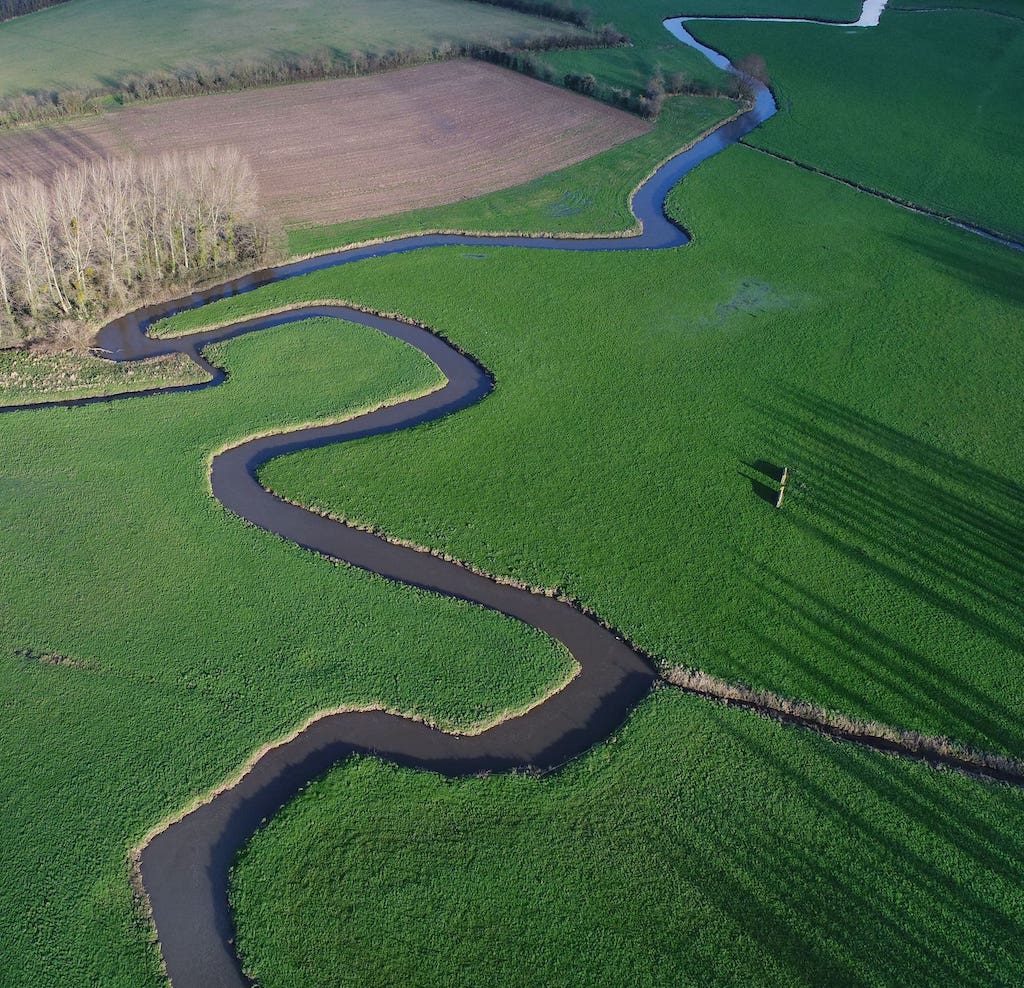
Covering wooded bocage, moors and coastline, the Cotentin and Bessin Marshes Regional Natural Park offers a tremendous variety of flora and fauna that is internationally recognised.
This rural inhabited area has a robust network of towns providing structure to the socioeconomic fabric, and is nationally renowned for the high value of its natural and cultural heritage.
It is a living countryside, but one in which nature stays protected, and the aim is also to enhance this heritage through innovative initiatives.
The Cotentin and Bessin Marshes Regional Natural Park and our Cooperative share the same ambition: to preserve the landscape and its natural resources by raising public awareness of the environment, while maintaining the development of economic activities that are essential for this preservation.
We work together on a daily basis to preserve this unique and exceptional terroir that we have inherited.
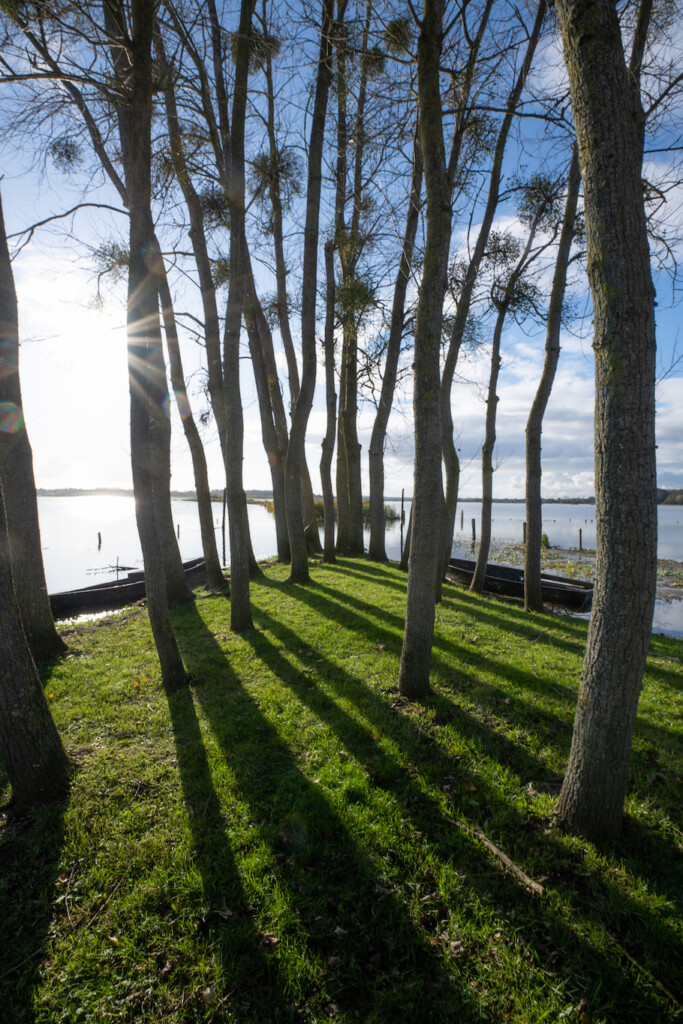
The Normande breed: the star of the Isigny Sainte-Mère herd
When it comes to milk, the terroir is defined by the soil and the climate, but also by the breeds of cows, combined with the know-how of the farmers and the companies that process the milk.
Descended from cattle imported by the Vikings in the 9th and 10th centuries, the “Normande”, recognisable by its white coat speckled with fawn and the rings around its eyes, has been proclaimed queen of the dairy cows for its milk rich in proteins and fats.
They produce an average of 6,000 kilograms of milk per year. Hardy by nature and with a very calm character, our Normande cows are able to adapt to all types of climate. Their milk is said to be “fromageable”, i.e. “cheeseable”: particularly suitable for the production of traditional cheeses.
Reared in the open air for a large part of the year, when the ground is dry and allows for grazing, our cows have an excellent physical constitution which allows for exceptional milk production in terms of both quality and quantity.
Their milk has a higher casein and fat content, which contributes to the production of excellent cheeses, butters and creams that are highly renowned.
Normande cows can have coats in three different colours and patterns
- “Caille”: a “quail” coat, a white background speckled with coloured spots
- “Blonde”: a “blond” coat with a large patch, blond in colour, covering almost the entire body of the cow. The belly (under the cow) remains white
- “Bringée”: a “brindle” coat with a large brindle-patterned patch covering almost the entire body of the cow. The belly (under the cow) remains white
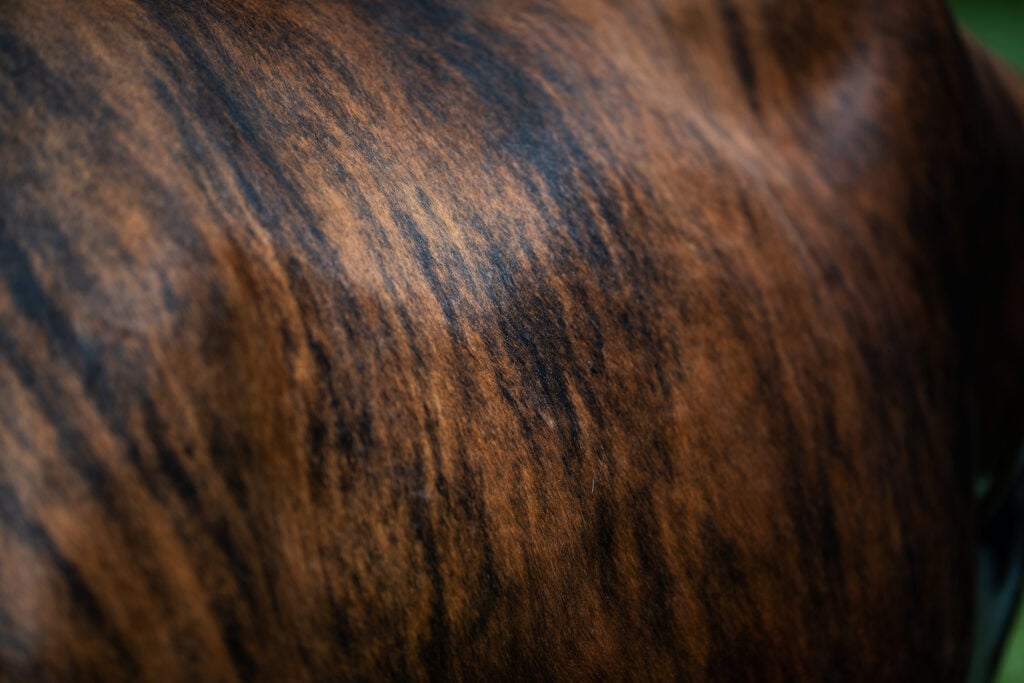
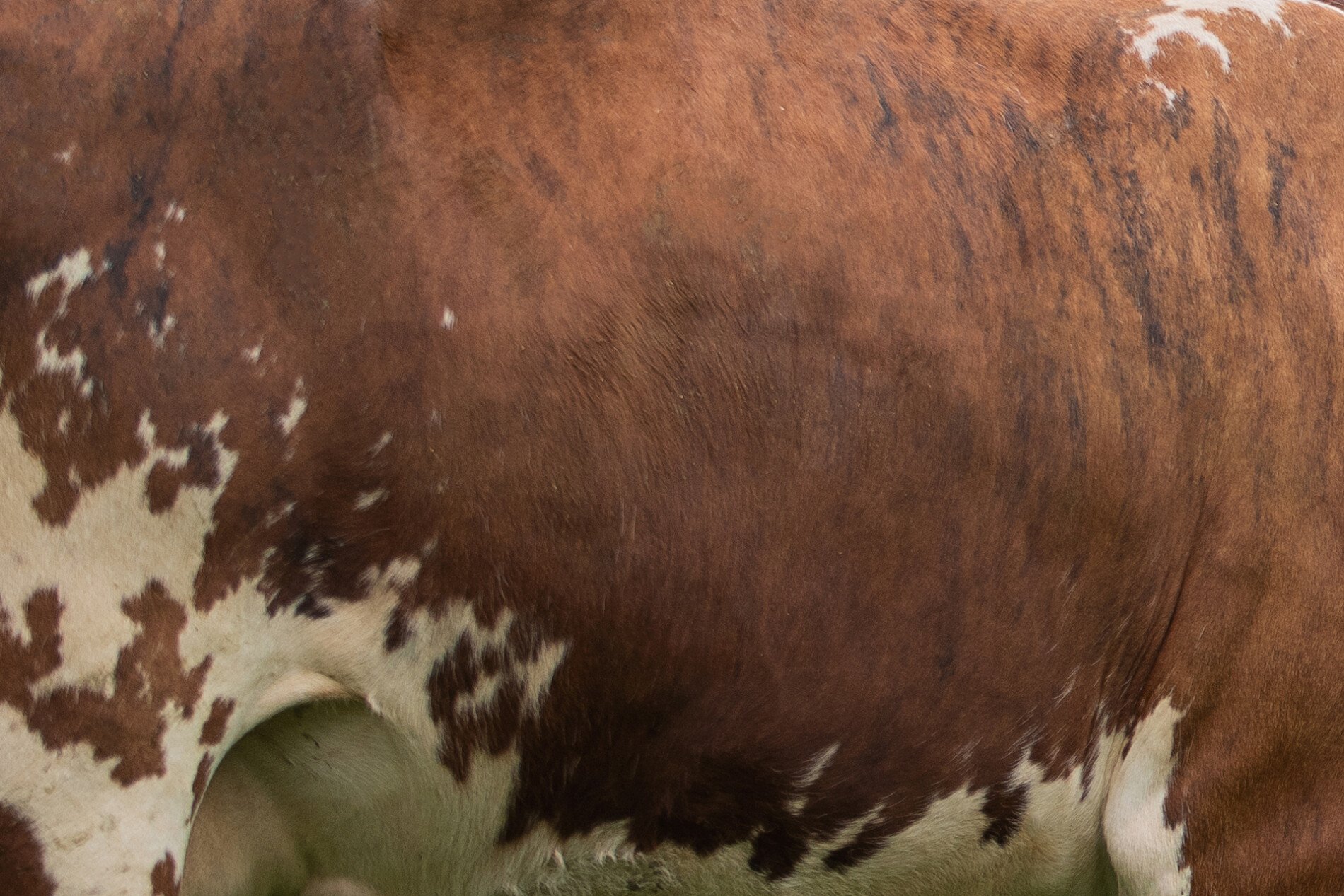
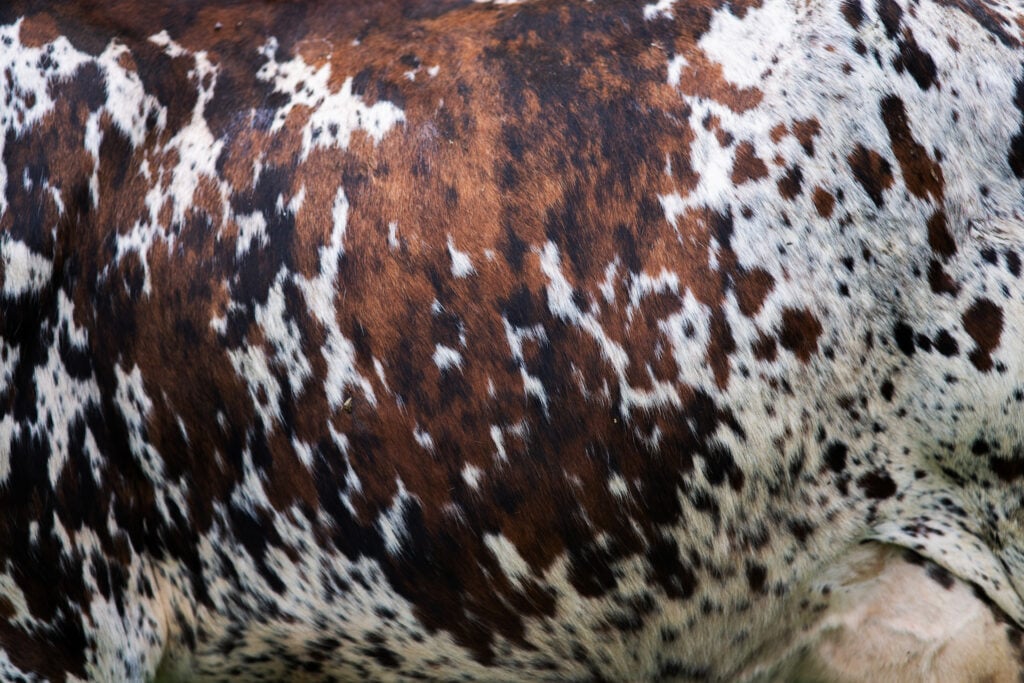
To produce Isigny PDO Butters and Creams, our farmers and producers follow an extensive farming method. This means that they adopt a human-scale farming method, prioritising grazing and a more sparing use of natural resources.
Our cooperative farmers are committed to practices that respect animals and the soil, as defined in the PDO specifications. Isigny Butter and Cream:
- The cows graze as soon as the weather and soil conditions permit, and for at least 7 months of the year.
- They have a minimum of 1 hectare of meadow for every 3 cows.
- Their feed is produced primarily on the farm.
- The milk comes from at least 30% Normande cows.
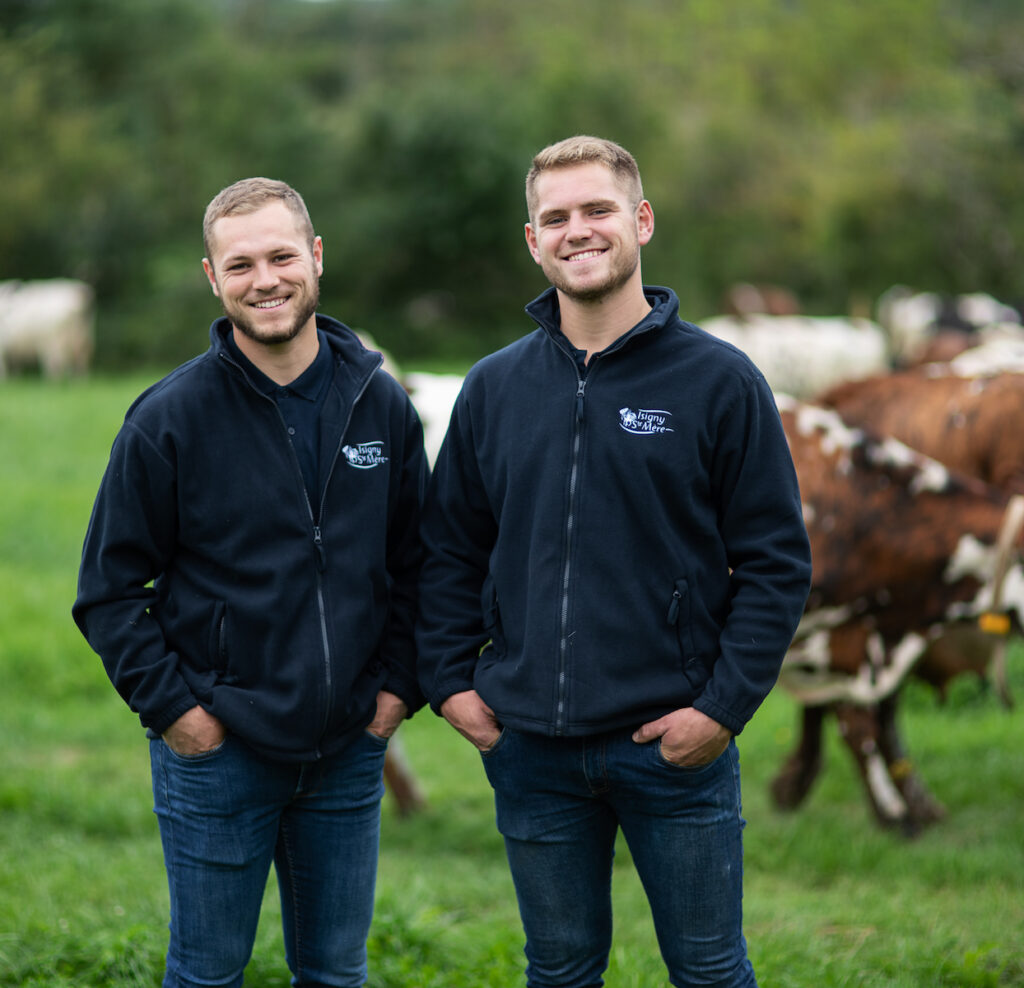
All our producers are signatories of the French Charter of Good Agricultural Practices, and they comply with the criteria that guarantee on-farm animal welfare. Our grazing model is perfectly in line with this approach.
Milk from an exceptional terroir…
A study has proved the specific nature of the quality of milk from the Isigny terroir.
Biochemical analyses reveal the consistency of this region’s specific unique elements. The cows’ diet appears to be one of the main factors of variation in the composition of the milk used for Isigny PDO Cream and Butter production. This milk contains high levels of β-carotene, iodine, oleic acid, and diacetyl, the essential factor in the aroma of Isigny PDO Butter.
(Study: Roger Desnouveaux/study aimed at highlighting the evidence of the specific nature and quality of Isigny milk – 1983/84).
Like with fine wines, there is indeed an Isigny terroir, and a climate specific to this small terroir. A prestigious dairy product, stemming from grass, sea breezes and rain, rooted in a unique soil shaped by the geology of the Bessin and the Cotentin marshes.